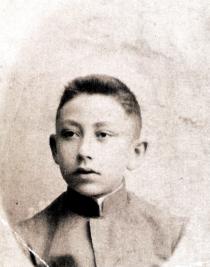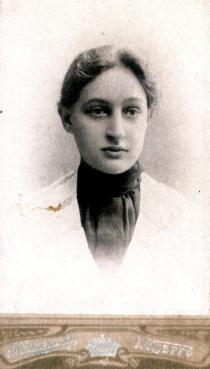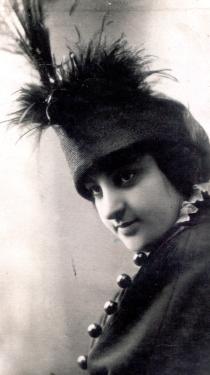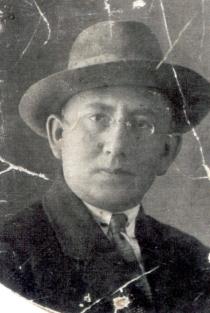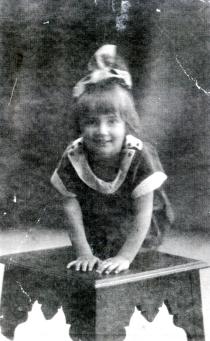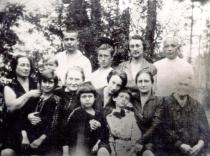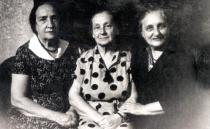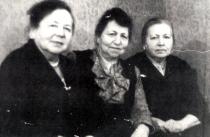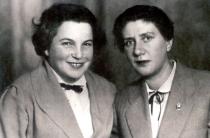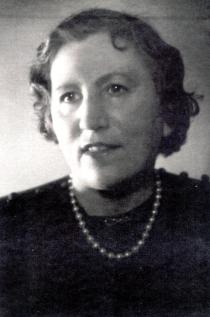This is our family photograph, taken during our summer vacations in Uman in 1927. From left to right, lower row: my father's sister Zina Skupnik and her daughter, my grandmother, Beila Rubinshtein, the daughter of my father's sister Rita Shapiro, my mother Sofia Rubinshtein, I in my mother's lap, Rita Shapiro and the father-in-law of my father's sister Sonia Rubinshtein. Upper row: Sonia's two sons, Sonia and her husband.
My father's family lived in Uman. Uman was a small provincial town in Cherkassy province. In the 17th century Uman belonged to Poland; to the Polish family of Prince Pototski. Pototski built the Sofievka park in Uman, named after Prince Pototski's wife Sofia, a Greek woman. This park is a beautiful creation of park architecture. There is a cascade of lakes, beautiful fountains and sculptures in this park. It's a remarkable place of interest, even nowadays. In 1793 Uman became a part of the Russian Empire. There were Jews, Ukrainians and Poles in Uman. Jews were mainly craftsmen. Uman was in the Pale of Settlement 1, so many of them lived in this town. There were several synagogues, an Orthodox Christian church and a Catholic cathedral. There were grammar schools and Russian and Jewish secondary schools. At the end of the 19th century a railroad was built in Uman to provide transportation to Kiev and Odessa.
My grandfather on my father's side, Mendel Rubinshtein, was born in Uman in the 1850s. He died in 1914. My grandmother Beila was born in Uman in 1854. My grandmother took an active part in public life. My father told me that she was a Zionist when he was a child and did charity work at the children's home for Jewish children. She was always involved in some other activities. She was very sociable. Even as an old woman she was still beautiful. She wore a brown wig. I don't know whether she wore a wig due to her religiosity or because she wanted to hide her thin hair when she was old. She had an artificial eye, which gave her a strange expression. I felt awkward in my grandmother's presence. During her visits she made acquaintances and often went out. She died in Uman in 1931.
My father was the youngest child and the only son in the family. He was born in 1889. His three sisters, Zina, Sonia and Rita, were older than my father. My aunts were pretty and cheerful women. They all knew Yiddish, but they almost always spoke Russian. They finished a Russian lower secondary school in Uman. Sonia studied at the accounting school and got a job later. Zina got married to the chief engineer of the distillery in Kharkov and was a housewife. Rita was a housewife.

